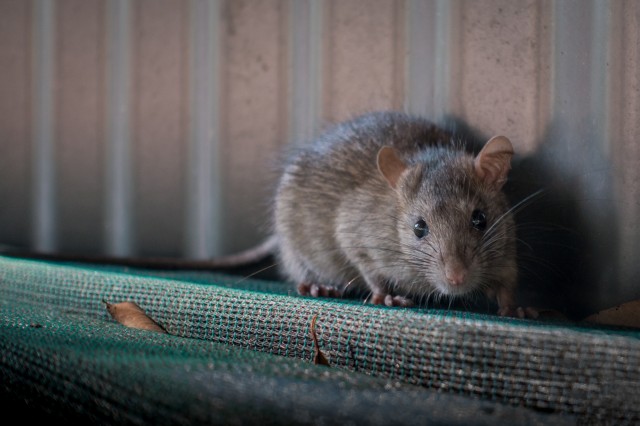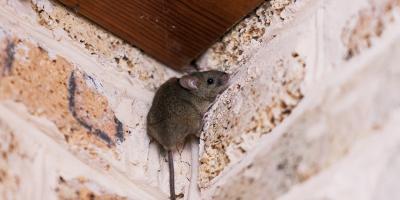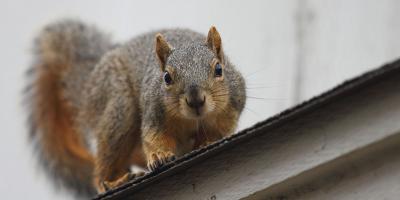Mice Vs. Rats: How To Spot The Difference

A small hole in the wall; sounds of scurrying above your head; stains and droppings left near the baseboard - all signs of a rodent infestation, which can cause serious damage to your home.
But not all rodents are exactly the same - and knowing which has made its way into your walls is a crucial step in getting them out, for good.
When it comes to figuring out whether it’s mice or rats running ramshod in your home, there are a few key signs that can alert you to exactly which rodent invader you might have on your hands. Here’s a look at some of the major differences between the two, and what you can do to keep both from leaving unwanted damage around your home.
Mice Vs. Rats: How Different Are They, Really?
When it comes right down to it, mice and rats are actually pretty unique from each other - even though they may share a lot in common.
If you suspect your home may be playing unwitting host to a nest of rodents, here’s what to keep an eye out for to let you know which kind of rodent invader you’re dealing with:
Size
The most immediately-obvious difference between mice and rats is also the first most observers notice: their size.
Mice, for instance, are especially crafty scavengers precisely because they are so small. The common House Mouse, for instance, usually grows to no more than 4 inches in length, and can weigh under 1 oz. when fully grown. This allows mice to hide easily, slip through incredibly small cracks and openings, and generally stay as far out of the way as possible even when at rest.
Rats, on the other hand, are significantly larger. The most common rat in New England - the Norway Rat - can reach sizes up to 9.5 inches in length, and can weigh up to 18 oz when fully grown. That significant size difference makes rats easy to identify when compared to mice - and also influences the way they behave when seeking food.
Appearance
Even if the sheer size difference between rats and mice isn’t enough to tip you off as to which is present in your home, closer inspection of each rodent’s physical appearance can also act as a clear tip off.
Mice tend to have small proportions across their entire body, including a small head, small feet, a pointed snout, and a small fuzzy tail. Common house mice also have large ears for their body, which may be easy to distinguish from far away. Mouse droppings - which can be found around nesting areas, food storage areas, and anywhere else they may be attracted to - are usually small and shaped like rods.
Rats, on the other hand, are significantly more stout from tip to tail, including a shorter snout, a thick body, and small, thin ears. Rats can also be distinguished by their long, hairless tails and by their larger, capsule-shaped droppings.
Behavior
While both rats and mice will enter your home likely looking for the same key resources - space to nest, food, water, and shelter form the elements - their individual behavior in going about finding these resources can be significantly different.
Mice may be notoriously skittish when it comes to being discovered, but they are actually known for being significantly bolder than their larger cousins precisely because they are of a small size, allowing them to more easily hide and sneak undetected. For this reason, mice are actually fairly fearless when it comes to searching out food. That means they are more likely to fall for traps, bait, and other removal efforts.
Rats, on the other hand, are unshakably cautious when it comes to exploring new areas, and because of their large size they may be less likely to take a chance by surfacing to explore than their smaller cousins. Rats are also notably strong swimmers, and will not hesitate to enter a building through a broken toilet or waterway if available.
Nest
Although both mice and rats will look to set up a reliable nesting spot somewhat nearby a reliable food source, the way in which each will go about it is distinct to each species.
Mice, due to their small size, will often look to set up a nest as close to the food source as possible. In a home, that can mean putting together a small nest made of paper and other scraps within your walls or in the back of a rarely-traveled closet, where warmth and easy access to food are available at all times.
Rats, however, will usually look for a nesting spot slightly farther away from any danger source. Many rats species, including the common Norway Rat, will even nest in burrows underground, preferring instead to dig out and search for food day by day rather than expose themselves to close contact with humans.
Know Thy Enemy - Then Take Action
Knowing which rodent your home may be dealing with is a crucial first step toward keeping your living space free from rodents. However, it is not the only step - and the next one may require some help from a professional.
Whether you’re dealing with an influx of mice or a full-on infestation of rats, keeping your home free form rodents is critical to the safety and healthy of your family or household members. That’s why our experienced rodent removal specialists can help to create a customized plan for keeping your home free from rodents today, tomorrow, and for months to come.
If you’re dealing with rodent issues and need some help, or if you’re simply looking to prevent rodents from even finding your home in the first place, get in touch and we’ll help establish the perfect prevention plan for your home.



